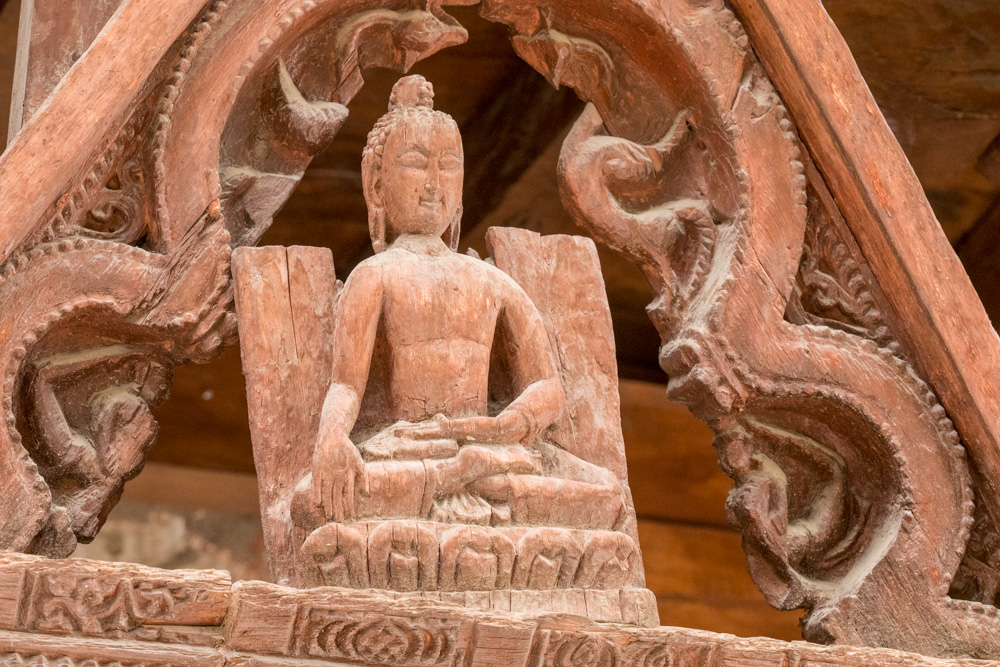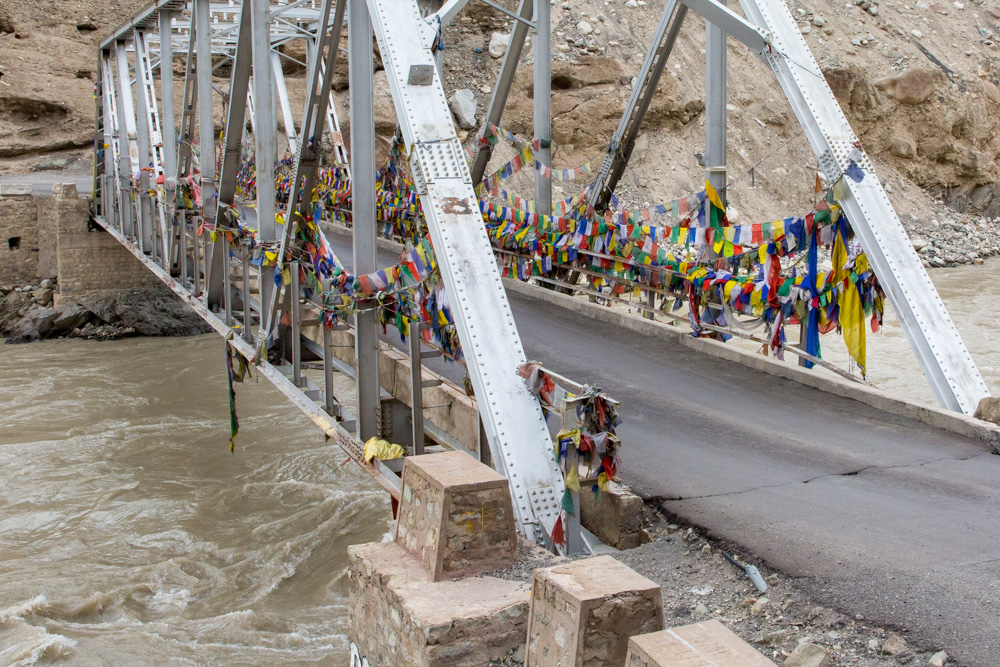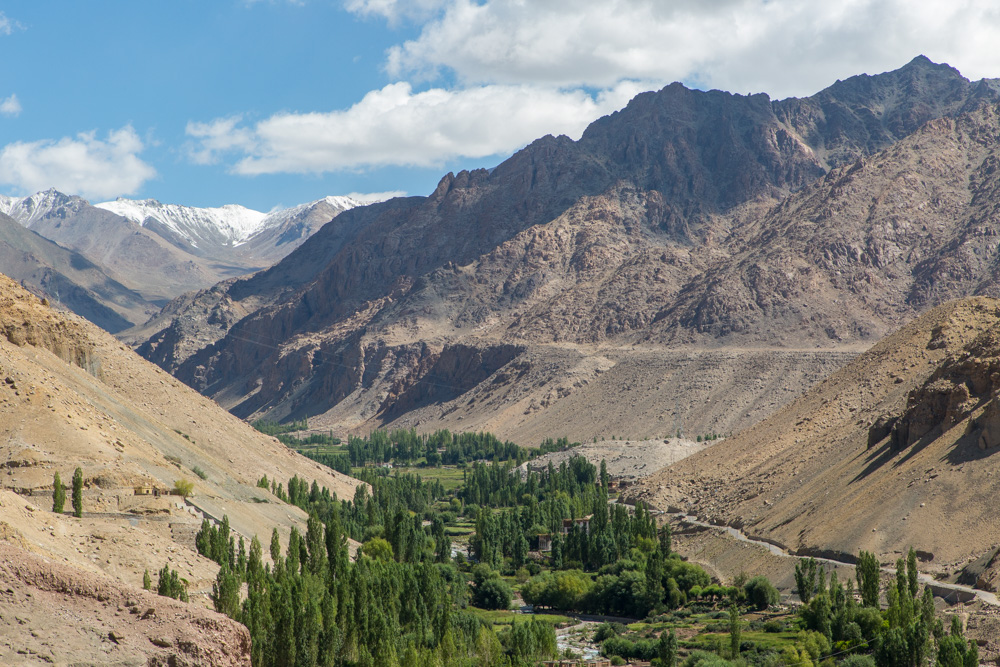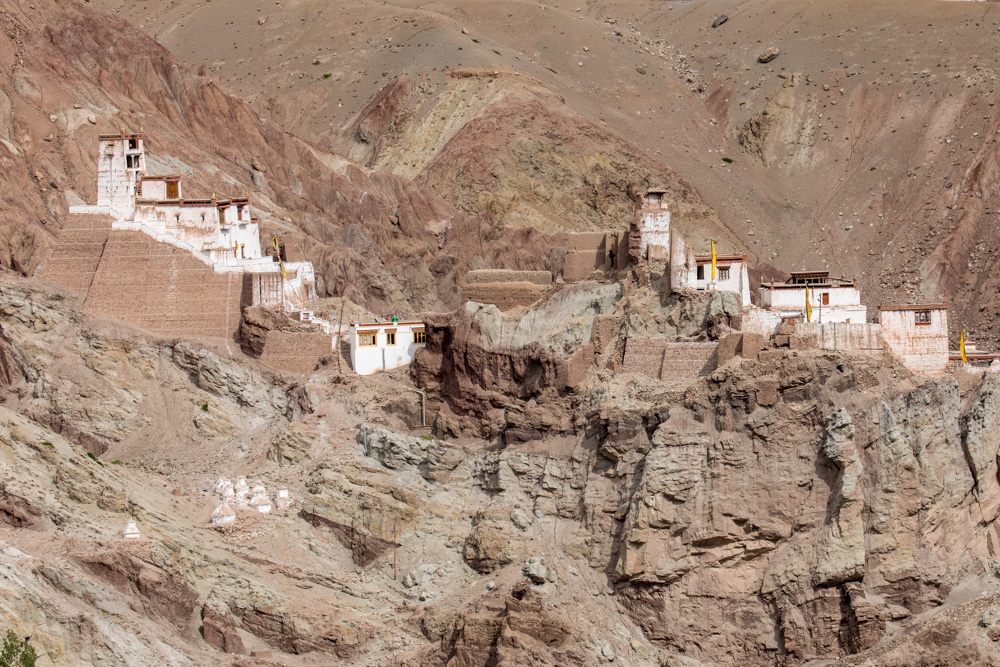Wednesday, August 21, 2019 -
Up early to catch sunrise. I made my way to the roof of the hotel and set up my
tripod and camera.
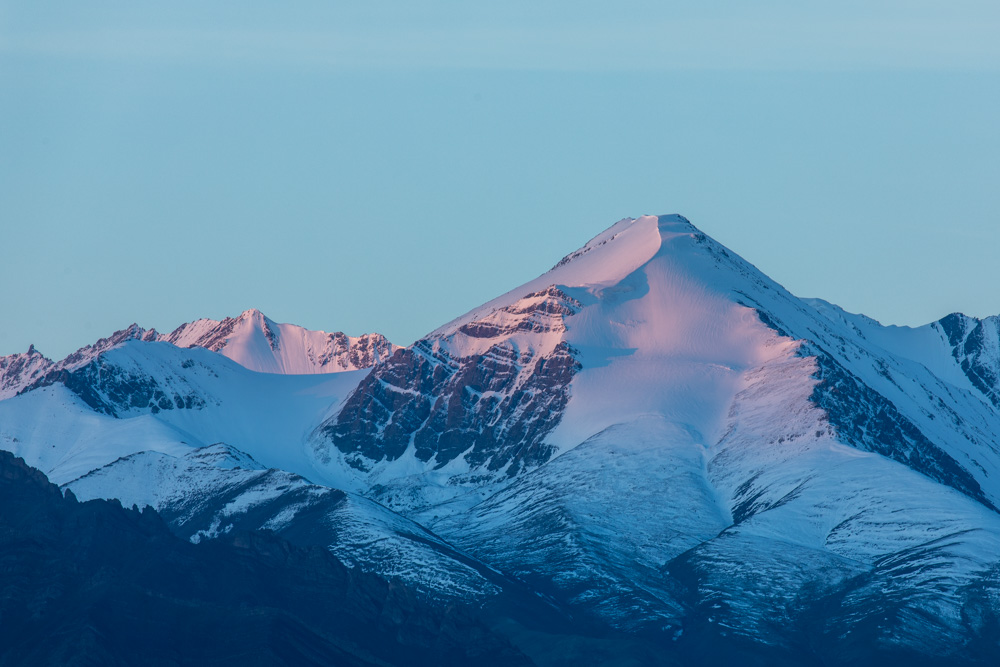
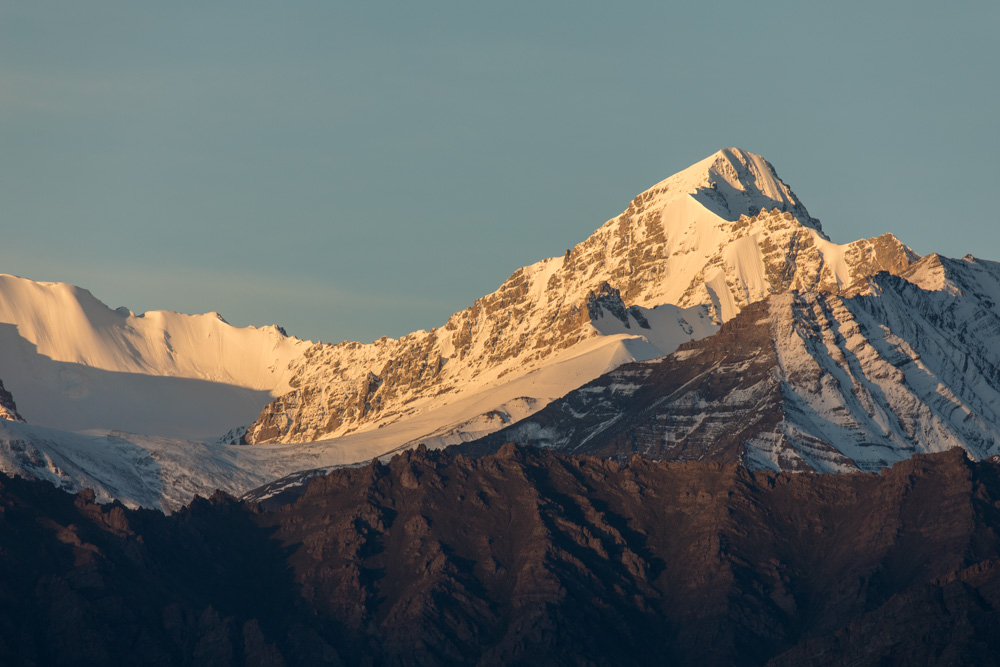
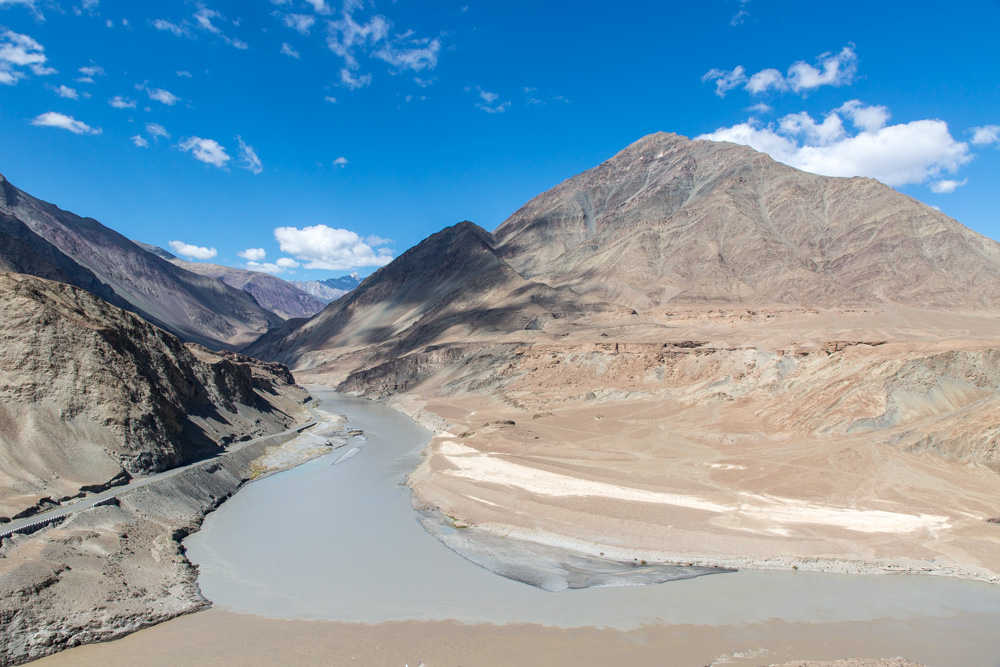

We stopped on a high bluff overlooking the rivers - this was right after "Magnetic Hill" - which is a concentration of iron ore so large that we turned off the engine, the car in neutral, and the vehicle moved uphill!!


The driver must have tired of me asking him to stop the car so I could take a picture.
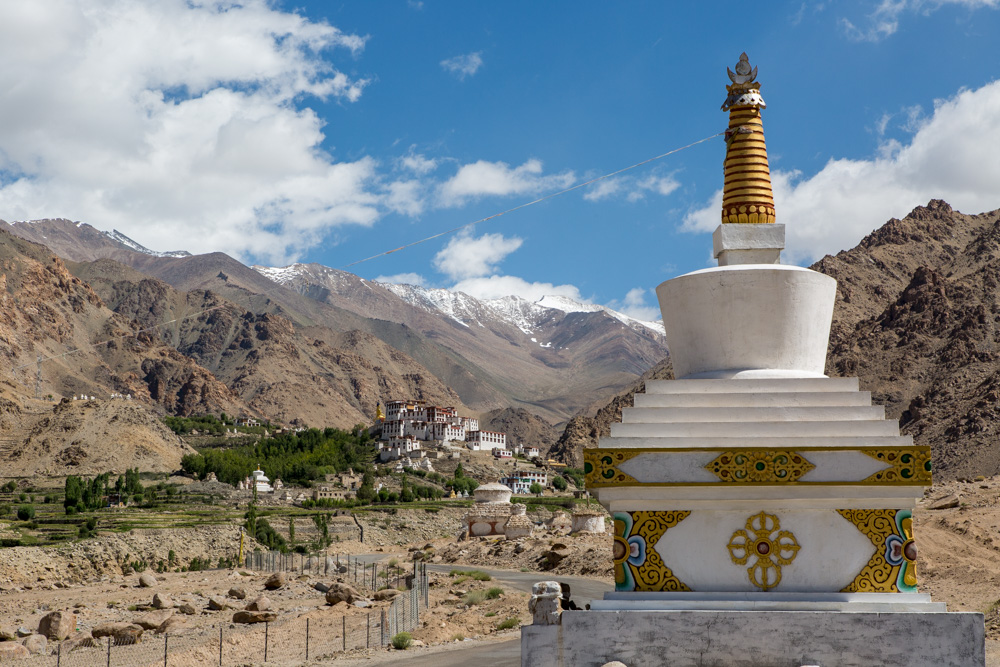
The monastery is picturesquely situated on a little hill in a small valley leading into the mountains. Below the monastery is a Likir village.
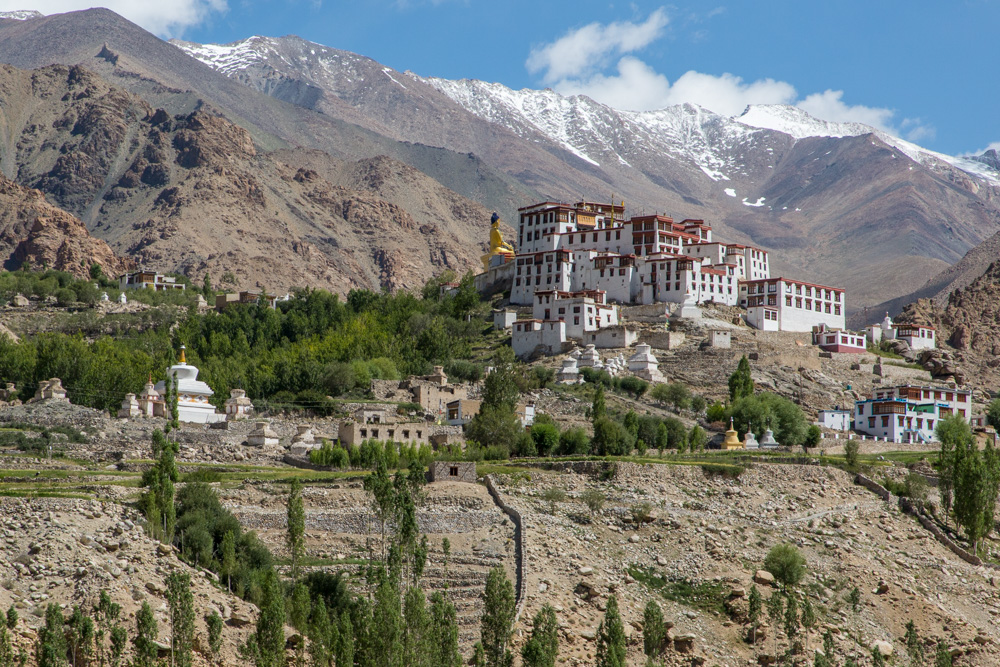
Likir is mentioned in the Ladakhi chronicles as having been erected by King Lhachen Gyalpo around 1065.
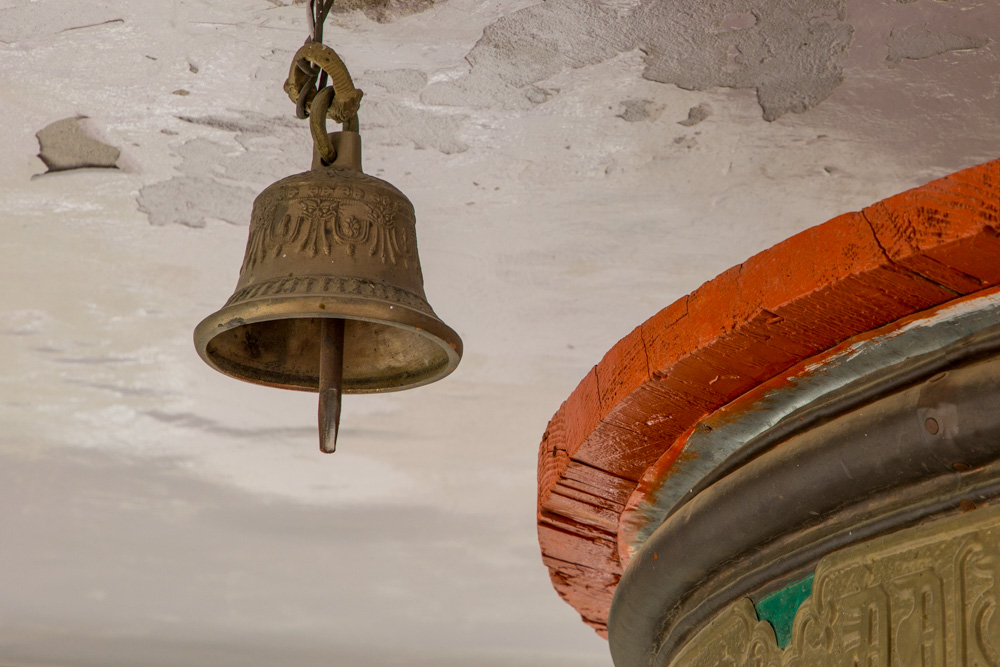
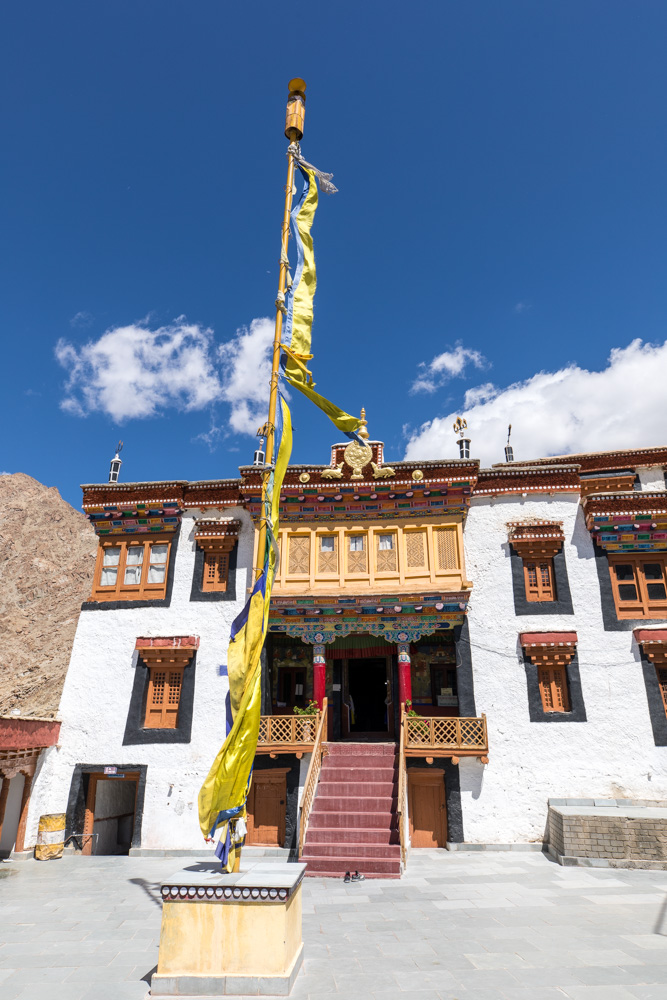
As I would learn, our experience at Likir was different from most monasteries - the rule typically was "no shoes, no cameras". But here I was able to use my camera inside.
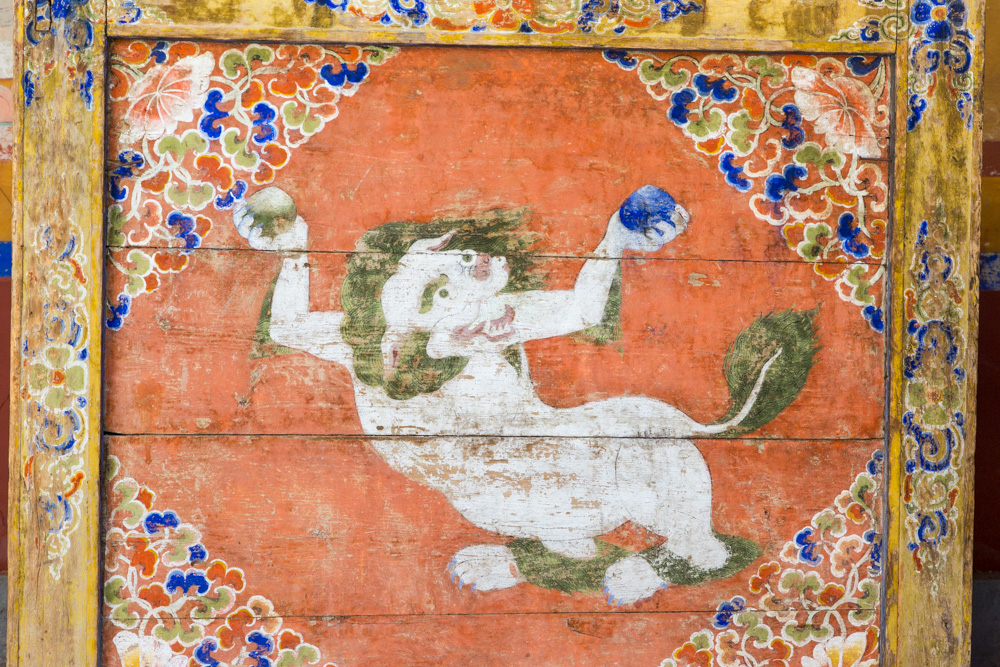

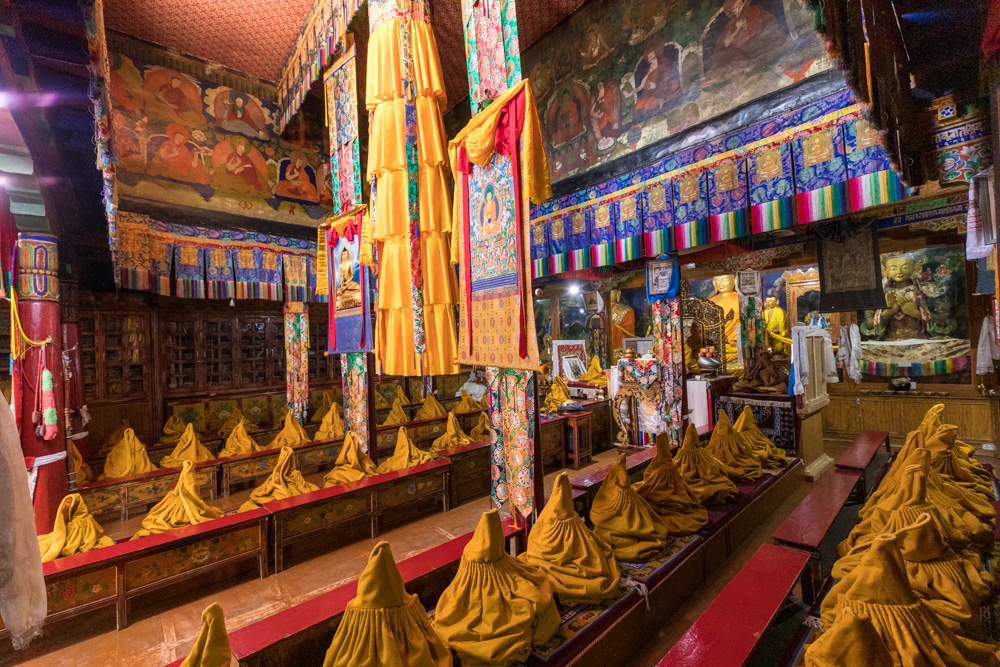
This was a small room but very colorful - again I was so happy to use my camera.

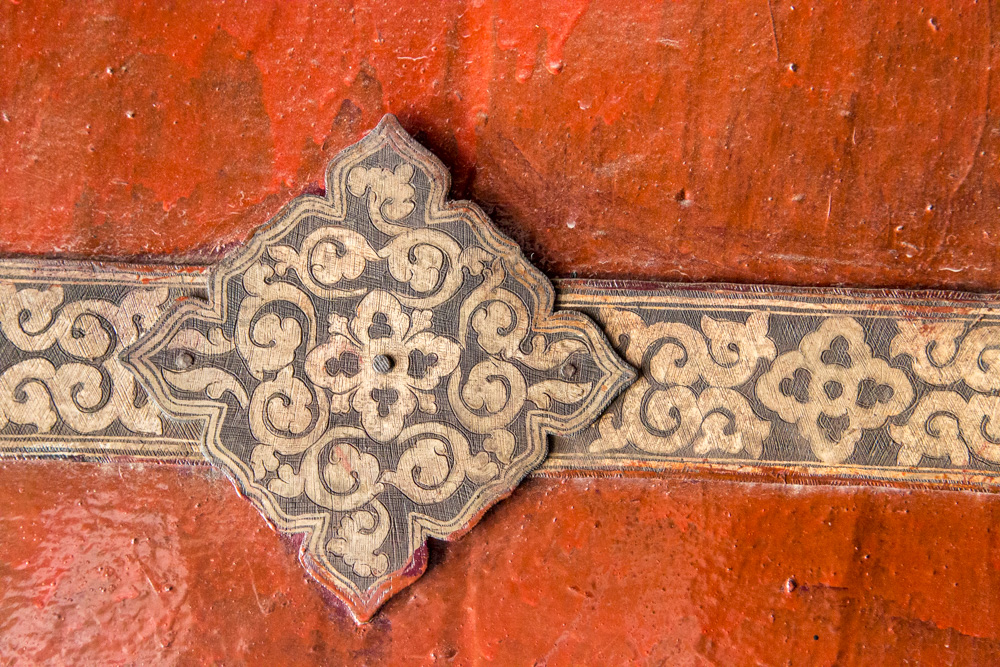

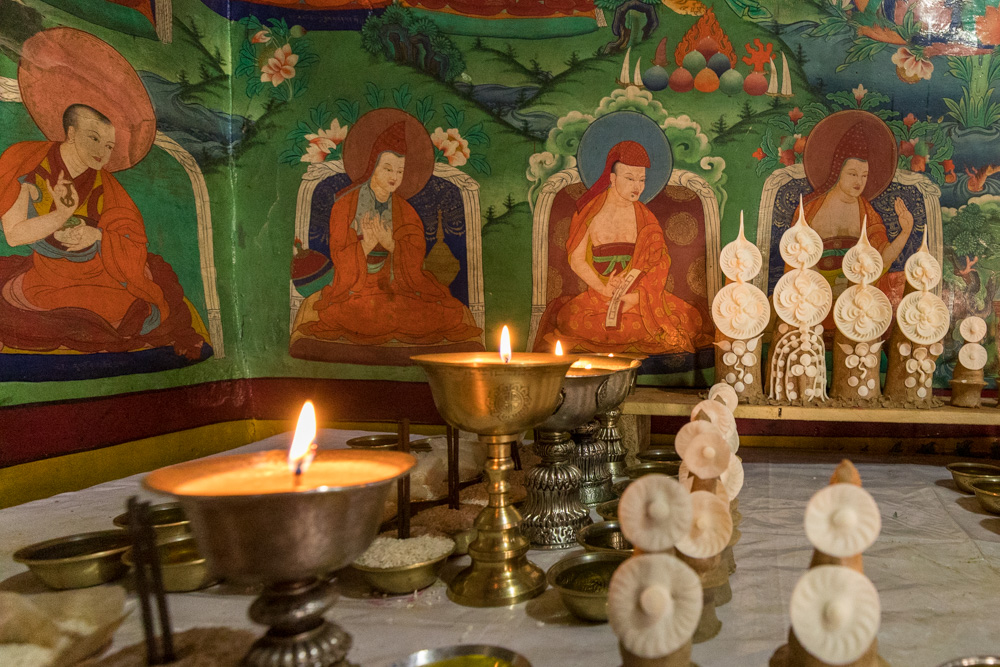

We sat down on the wall but the small space filled up quickly. I offered to move as some local people came in - Virginia Ann stayed next to our guide. Here she is seated behind a local woman, in traditional hat and dress, observing the ceremony.

There were not 120 monks in the room but it was full. Much chanting and "singing".
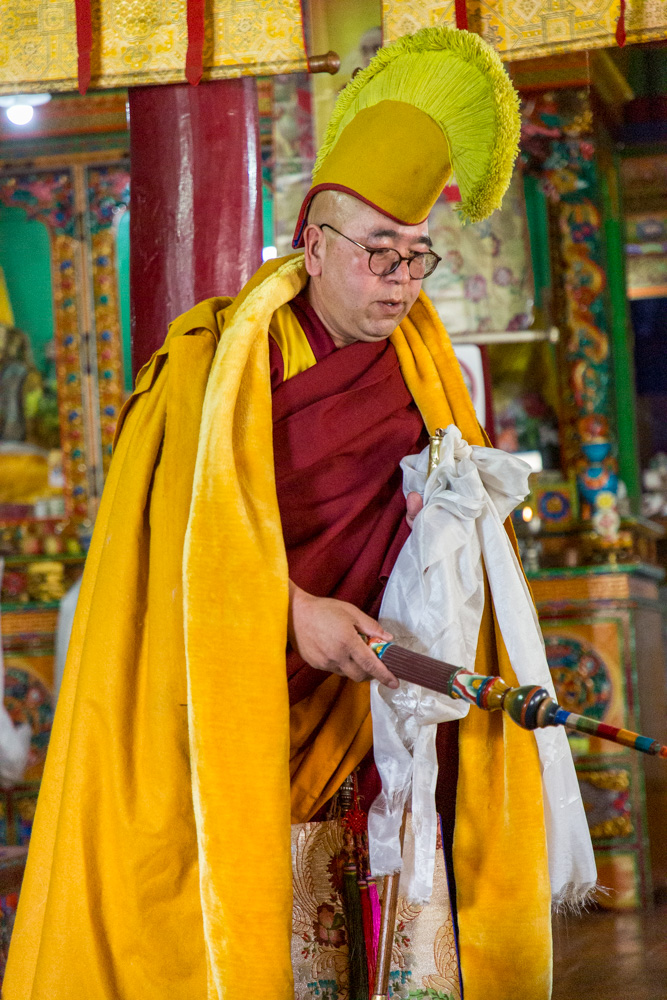
We were very lucky to be "caught" inside - most of the tourists were forced to listen from the outside courtyard.
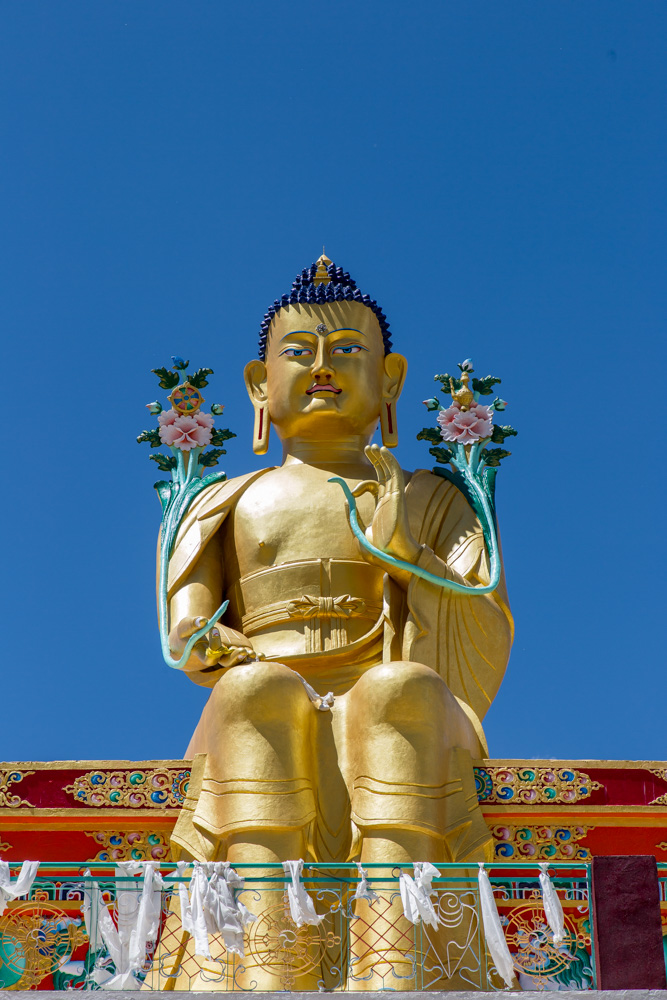

A couple who had been studying buddhism at Dharamshala and were now riding a motorcycle around Ladakh, gave us some suggestions for lunch. She was from New Jersey and he was from St Petersburg, Russia.

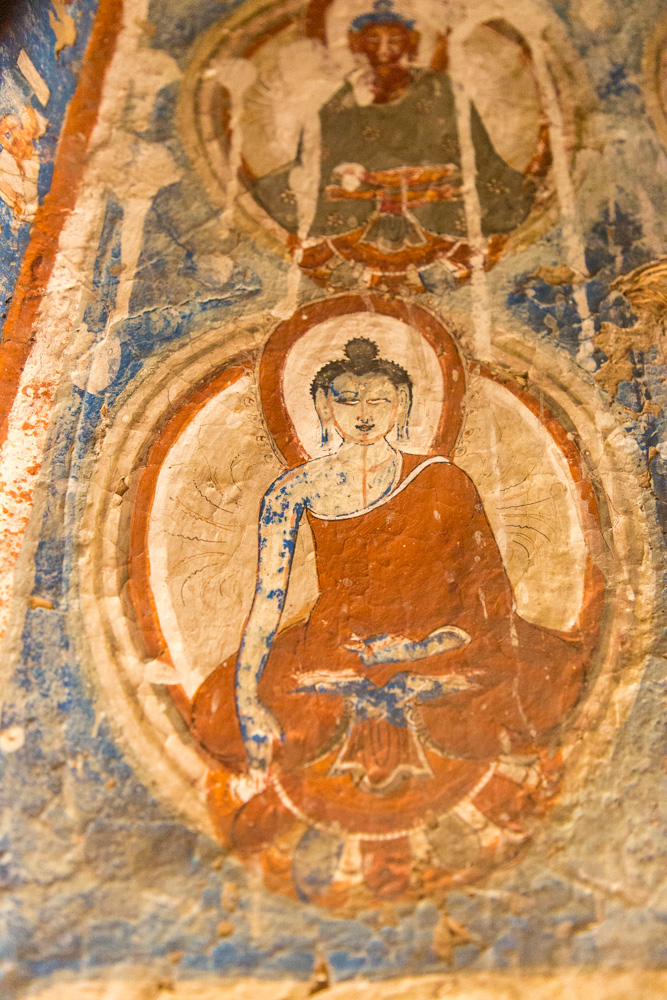

A long row of prayer wheels along a path between the shrines
